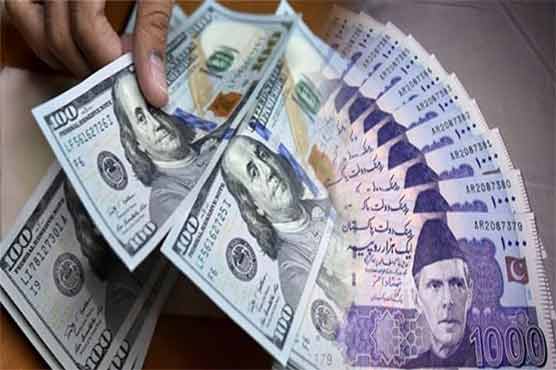Rupee firms up 20 paisa against US dollar in open market

The local currency was traded at Rs155.15 in the open market, and Rs155.12 in the interbank market.
KARACHI (Dunya News) – The Pakistani rupee on Wednesday recovered its value by 20 paisa in the open market and gained its strength by 5 paisa in the interbank market.
The local currency was traded at Rs155.15 in the open market, and Rs155.12 in the interbank market.
Earlier, Importantly, Moody’s Investors Service ("Moody’s") has affirmed Pakistan’s local and foreign currency long-term issuer and senior unsecured debt ratings at B3 and changed the outlook to stable from negative.
According to a report issued by the bond credit rating business of Moody’s Corporation, “the change in outlook to stable is driven by Moody’s expectations that the balance of payments dynamics will continue to improve, supported by policy adjustments and currency flexibility.”
It further stated, “Such developments reduce external vulnerability risks, although foreign exchange reserve buffers remain low and will take time to rebuild. Moreover, while fiscal strength has weakened with higher debt levels largely as a result of currency depreciation, ongoing fiscal reforms, including through the country’s International Monetary Fund (IMF) programme, will mitigate risks related to debt sustainability and government liquidity.”
“The rating affirmation reflects Pakistan’s relatively large economy and robust long-term growth potential, coupled with ongoing institutional enhancements that raise policy credibility and effectiveness, albeit from a low starting point.”
“These credit strengths are balanced against structural constraints to economic and export competitiveness, the government’s low revenue generation capacity that weakens debt affordability, fiscal strength that will remain weak over the foreseeable future, as well as political and still-material external vulnerability risks,” it added.
Moody’s has affirmed the B3 foreign currency senior unsecured ratings for The Second Pakistan Int’l Sukuk Co. Ltd. and The Third Pakistan International Sukuk Co Ltd. The associated payment obligations are, in Moody’s view, direct obligations of the Government of Pakistan.
“Pakistan’s Ba3 local currency bond and deposit ceilings remain unchanged. The B2 foreign currency bond ceiling and the Caa1 foreign currency deposit ceiling are also unchanged. The short-term foreign currency bond and deposit ceilings remain unchanged at Not Prime. These ceilings act as a cap on the ratings that can be assigned to the obligations of other entities domiciled in the country,” it further mentioned.
The report further outlined that narrowing current account deficits, in combination with enhancements to the policy framework including currency flexibility, lower external vulnerability risks in Pakistan. “However, foreign exchange reserve adequacy will take time to rebuild.”
Moody’s expects Pakistan’s current account deficit (CAD) to continue narrowing in the current and next fiscal year (ending June of each year), averaging around 2.2% of GDP, from more than 6% in fiscal 2018 (the year ending June 2018) and around 5% in fiscal 2019.
Moody’s expects policy enhancements, including strengthened central bank independence and the commitment to currency flexibility, to support the reduction in external vulnerability risks.
In particular, the government is planning to introduce a new State Bank of Pakistan (SBP) Act to forbid central bank financing of government debt and clarify SBP’s primary objective of price stability.
The IMF programme, which commenced in July 2019, targets higher foreign exchange reserve levels and has unlocked significant external funding from multilateral partners including the Asian Development Bank and the World Bank.
Nevertheless, unless the government can effectively mobilise private sector resources, foreign exchange reserves are unlikely to increase substantially from current levels.

